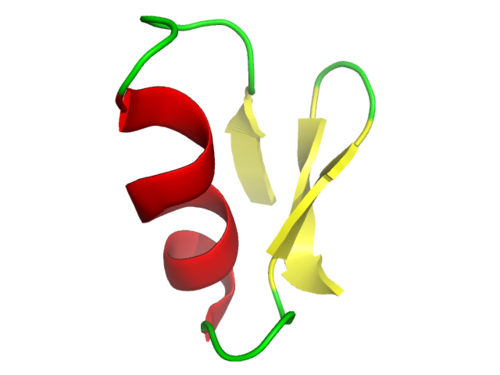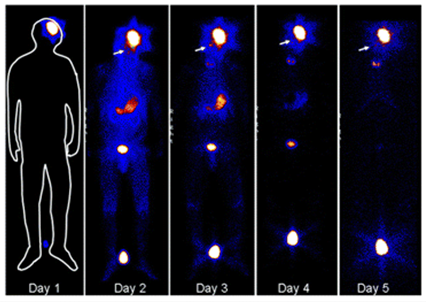Primary brain tumours are tumours which originate from within the brain, as opposed to secondary brain tumours which are tumours which have spread from cancer elsewhere in the body. Whereas primary brain cancers aren’t as prevalent as other cancers, they certainly are amongst the most deadly. As cancers are byproduct of cellular replication and growth, it’s very rare that cancers will arise from neurons in the brain as cell division in the brain is minimal. However those other inhabitants of our brain, the glial cells, continue dividing throughout life, and these are the cells in the brain most susceptible to becoming cancerous. Cancers of glial origin are called gliomas. There are various types of glioma due to the varying types of glia in the brain. Ependycytes will give rise to ependymomas, oligodendrocytes will give rise to oligodendroglioma and astrocytes will give rise to astrocytoma.
Astrocytoma is the most common out of the gliomas as astrocytes are the most numerous and are the glia which divide the most, making them more susceptible to gaining mutations which cause errors in growth and division which give rise to cancer. There are various types of astrocytomas, the most malignant of which is glioblastoma. Glioblastoma is a relatively common form of brain cancer in adults, and has an average survival rate of about 1 year following diagnosis. Survival rate past the 5 year benchmark is less than 3%.

MRI scan of a glioma in the frontal lobe
An interesting and unique property of gliomas is that they express a protein on their surface which should ordinarily be expressed within normal cells. This protein is a type of chloride ion channel, and is involved in the movement of chloride ions (Cl-) within the cell. Gliomas express these on their surface to mediate movement of Cl- in/out of the cell, which is an important mechanism in the movement of glioma cells.

The deathstalker scorpion
The deathstalker scorpion of the Middle East secretes a powerful venom to paralyse and kill its ordinary insect prey. The venom from this aggressive and dangerous scorpion is a concoction of toxins, which target various ion channels, wreaking havoc with the likes of the neurons and other cells. However, one toxin from this concoction has been found to be of benefit in medical technology. Folks, may I introduce to you - Chlorotoxin, affectionately abbreviated to CTX. In humans, CTX preferentially binds to these glioma specific surface Chloride channels.

Protein structure of chlorotoxin (CTX)
Scientists have learned to exploit this peculiar biological harmony of CTX and glioma by isolating the chlorotoxin from the rest of the toxins in deathstalker venom, and attaching fluorescent molecular beacons to them. These ‘beacons’ emit harmless, non-ionising radiation which can be detected by sensors, but does no harm to the cells (not even harmful to the cancer cells). This signal is only emitted from the chlorotoxin-bound glioma cells, so scientists and doctors can pinpoint exactly where tumours are in the brain. This CTX-molecular beacon combo is known as Tumour Paint.

Process of glioma 'painting’ in a human. The 'day 1’ picture is the reference image before injection of CTX. The brain tumour is highlighted on day 1 for our reference, CTX hasn’t been applied yet. Between the ankles, the small blue blob is a CTX callibration point, as a reference point for the CTX signal. On Day 2 the CTX has already been administered you can see the CTX distributed throughout the system, and over time it all gets bound up in the tumour, and leaves general circulation. The bladder initially gives off an intense signal as some CTX is eliminated into the urine. On day 5, the glioma is glowing as bright as the callibration point. That’s a large glioma.
To enhance how we view brain tumours (without opening up the skull), magnetic nanoprobes can also be attached to CTX molecules. These magnetic nanoprobes are Iron oxide particles encased within a carbohydrate shell. The iron oxide distorts the signal read by MRI scanners, coming up as a black region. This kind of tumour painting is of much higher resolution, though it does require access to an MRI machine.
There is even scope to specifically deliver anti-cancer treatments to glioma cells by attaching siRNA to CTX. siRNA is a type of genetic material involved in silencing genes. siRNA has been toted as a potential controller of many disease states including genetic conditions, but the main problem with this versatile new technology is that it’s hard to deliver it to where its needed in the body without the use of complex invasive surgery. As a result, it’s not yet used in mainstream clinical practice. Scientists could possibly engineer an siRNA which would silence the mutated growth genes involved in making the glioma cancerous, and CTX could be used to specifically target and deliver anti-cancer siRNA into the glioma, thus controlling it.
So painting tumours with selective scorpion toxins is potentially good news for sufferers of brain cancers. Some more good news is that brain tumours in general are of the rarer forms of cancer, and with further advances in this field perhaps we can confine the damning diagnosis of the brain tumour into history.

stratosfen liked this
pessimistic-realist-blog reblogged this from captain-nitrogen-blog
sometimesreliable-blog-blog liked this
rwknoll reblogged this from captain-nitrogen-blog
thewayoftimelessness-blog reblogged this from captain-nitrogen-blog
peacephotography liked this
pseudohallucination liked this
ryrnun liked this
 polymath4ever reblogged this from captain-nitrogen-blog
polymath4ever reblogged this from captain-nitrogen-blog tkkanno liked this
queef-stew reblogged this from captain-nitrogen-blog
queef-stew liked this
thepatternbazaar-blog liked this
dreammoreworkless-blog liked this
ucmst-blog liked this
young-medic-blog reblogged this from captain-nitrogen-blog and added:
Damn that’s awesome!!!
thefirstprinciple liked this
lanternlightsss liked this
patosauce liked this
captain-nitrogen-blog posted this